#Hyades cluster
Text


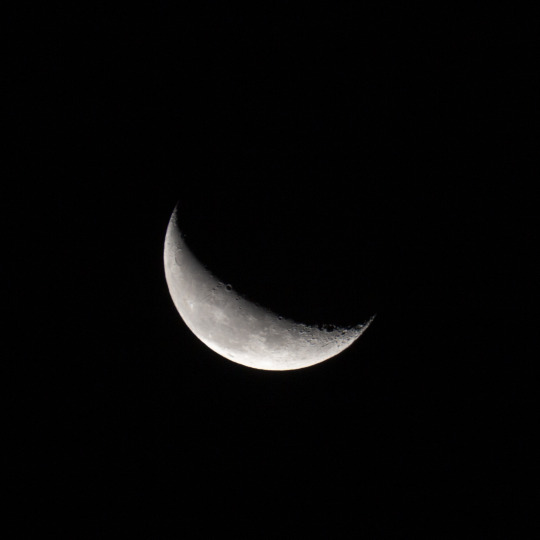
NO WAR
Moon and Hyades (Aug. 11, 2023)
72 notes
·
View notes
Photo
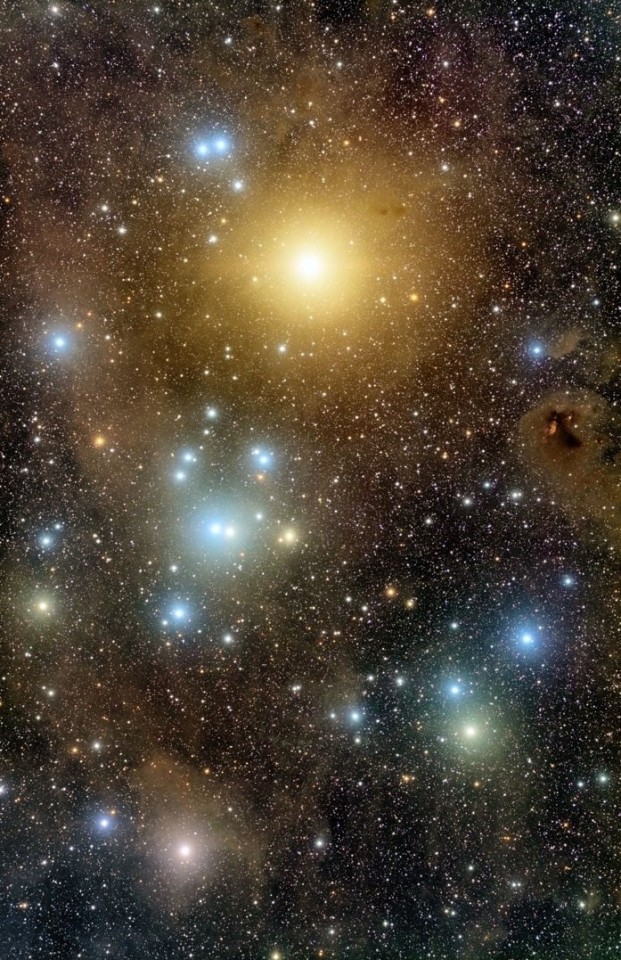
Hyades Star Cluster
#Astronomy#NASA#Night#Sky#Stars#Space#Science#Universe#Cosmos#Cosmic#Solar System#Hyades#Star#Cluster#Nebula#Galaxy#Constellations#Constellation#Rainbow#Bright
1K notes
·
View notes
Text

Hyades
// Art Fight attack on Frostoniaaaaa
#art fight#art fight 2023#stars#space#hyades#star cluster#wolves#canines#illustration#digital#painting#full body#feral#others ocs#team vampires
61 notes
·
View notes
Text
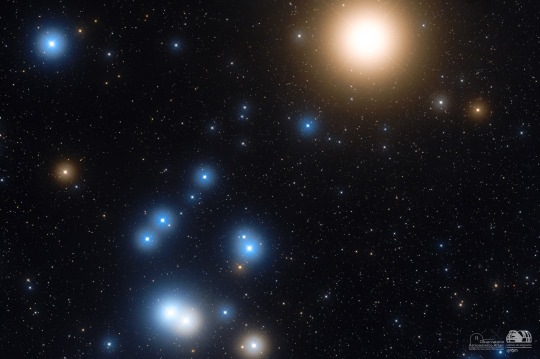
Aldebaran (α Tauri, orange star, upper right) and some stars of the Hyades // Guillermo Cervantes Mosqueda
The name Aldebaran comes from the Arabic al Dabarān, meaning "the follower" because it seems to follow the Pleiades.
#astronomy#astrophotography#star#stars#red giant#red giant star#aldebaran#alpha tauri#star cluster#open cluster#hyades#taurus
51 notes
·
View notes
Text
Bitches will make it so that you cannot forget Carcosa, where black stars hang in the heavens, where the shadows of men's thoughts lengthen in the afternoon when the twin suns sink into the Lake of Hali and be like "can't help being a Taurus ♉💫💛!"
#revs thoughts#cthulhu mythos#the king in yellow#hastur#for context: the Hyades are a star cluster in the constellation Taurus#and they are also mentioned in Cassilda's song as well as there being a “secret of the Hyades”#anyway this is a stupid joke for approximately six people
37 notes
·
View notes
Text
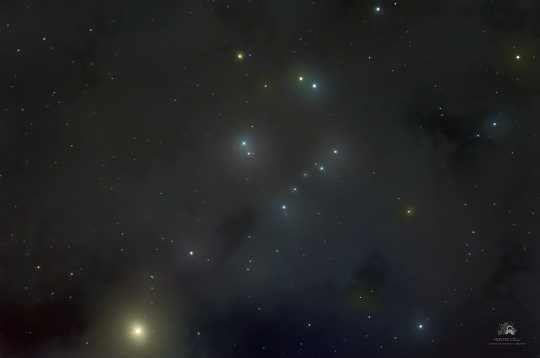
Hyades (star cluster) & Aldebaran with clouds
Constellation Taurus
Distance: 153 ly
DSLR Canon Rebel T3i
#astrophotography#astrophotos#astro observations#urban astrophotography#astronomy#original photographers#cosmos#universe#hyades#star cluster
61 notes
·
View notes
Text

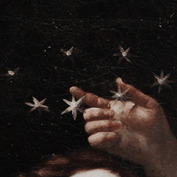


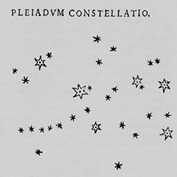




myth moodboards: the pleiades
in greek mythology, the pleiades were seven sister-nymphs, companions of artemis, the goddess of the hunt. together with their sisters, the hyades, they were called the atlantides, dodonides, or nysiades, nursemaids and teachers of the infant dionysus. the pleiades were thought to have been translated to the night sky as a cluster of stars.
requested by anon
#ended up doing one mb instead of one for each but! i remembered i should probably do actual edits to remind people i exist before i start#gearing up for ff february and everyones like wait are you still alive#the pleiades#greek mythology#mythedit#mine#*#mythmoodboard
372 notes
·
View notes
Photo
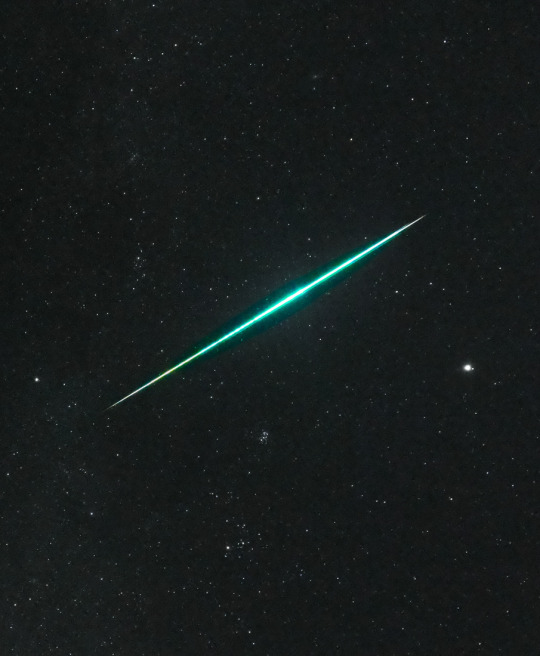
2023 December 28
Jupiter and the Geminid
Image Credit & Copyright: Gaurav Singh
Explanation: For a brief moment, this brilliant fireball meteor outshone Jupiter in planet Earth's night. The serendipitous image was captured while hunting meteors under cold Canadian skies with a camera in timelapse mode on December 14, near the peak of the Geminid meteor shower. The Geminid meteor shower, asteroid 3200 Phaethon's annual gift, always arrives in December. Dust shed along the orbit of the mysterious asteroid causes the meteor streaks, as the vaporizing grains plow through our fair planet's upper atmosphere at 22 kilometers per second. Of course Geminid shower meteors appear to radiate from a point in the constellation of the Twins. That's below and left of this frame. With bright Jupiter on the right, also in the December night skyview are the Pleiades and Hyades star clusters.
∞ Source: apod.nasa.gov/apod/ap231228.html
202 notes
·
View notes
Photo

Closest star cluster to the Sun: The Hyades
#star cluster#nasa#space#astrophotography#planet#astronomy#planets#galaxy#nebula#solar system#stars#night sky#cosmos#universe
1K notes
·
View notes
Text

NO WAR
Moon and Hyades cluster (Oct. 31, 2023)
24 notes
·
View notes
Photo

M44: The Beehive Cluster : A mere 600 light-years away, M44 is one of the closest star clusters to our solar system. Also known as the Praesepe or the Beehive cluster its stars are young though, about 600 million years old compared to our Sun's 4.5 billion years. Based on similar ages and motion through space, M44 and the even closer Hyades star cluster in Taurus are thought to have been born together in the same large molecular cloud. An open cluster spanning some 15 light-years, M44 holds 1,000 stars or so and covers about 3 full moons (1.5 degrees) on the sky in the constellation Cancer. Visible to the unaided eye, M44 has been recognized since antiquity. Described as a faint cloud or celestial mist long before being included as the 44th entry in Charles Messier's 18th century catalog, the cluster was not resolved into its individual stars until telescopes were available. A popular target for modern, binocular-equipped sky gazers, the cluster's few yellowish tinted, cool, red giants are scattered through the field of its brighter hot blue main sequence stars in this telescopic group snapshot. Dramatic diffraction spikes highlighting the brighter cluster members were created with string crossed in front of the telescope's objective lens. via NASA
744 notes
·
View notes
Text

The origin and meaning of the Taurus Symbol
In astrology the Taurus symbol is a bull. Taurus is associated with beauty, sensuality and an artistic nature. Other Taurean characteristics include steadfastness, strength, hard work, patience, dependability, and stubbornness! Taurus rules the neck, shoulders, the throat, voice, and the throat chakra in the body.
Taurus is the fixed earth sign and it’s probably the most down to earth of zodiac signs. That said, there is also a deeply spiritual side to this sign. Esoterically Taurus is associated with the opening of the third eye and with enlightenment.
The Constellation of Taurus
It’s commonly believed that the Taurus Symbol comes from the constellation of Taurus. The stars are supposed to form the shape of a bull’s head and forequarters. But when you look at it, it isn’t easy to see the shape of a bull. So the Taurus symbol probably represents something much deeper than a mere visual similarity. (Also see constellation vs zodiac sign )
The constellation of Taurus is very large with two well-known star clusters: the Hyades and the Pleiades. The brightest star in Taurus is the red giant Aldebaran. It’s name comes from the Arabic word al-dabarān, which means “the follower”. Aldebaran is also called “the eye of the Bull“. In the Ancient Mystery schools this was called “the eye of illumination“. The reference to ‘followers’ and ‘illumination’ are another hint at a deep connection between Taurus and spiritual awakening.
Taurus Symbol in Esoteric Astrology
In Esoteric Astrology it says our soul’s journey begins in Aries as a point of light in the mind of God. In Taurus that point of light then becomes a single emanating beam of light. Accordingly, the energy of Life takes shape by moving into form in Taurus.
Taurus is the fixed earth sign. The earth element represents substance. In other words, the physical realm. In addition, ‘fixed’ energy forms conduits, supports or containers. Consequently the esoteric purpose of Taurus is to maintain an unswerving single-pointed focus on the material plane. Especially at this crucial early stage, when Life is moving outward on it’s journey into form. In short, the esoteric purpose of Taurus is to be a steadfast guiding light.
The four cardinal signs mark the beginning of a season. These are Aries (spring equinox), Cancer, Libra (autumn equinox) and Capricorn.
Next, the four fixed signs mark the peak of each season. Taurus is the fullness of spring. Leo is the height of summer. Scorpio is the peak of autumn and Aquarius marks the depths of winter.
Finally four mutable signs mark the changing seasons. In Gemini spring rolls into summer. Virgo watches summer turn into autumn. Sagittarius rolls autumn into winter and in Pisces winter rolls into spring. (These are the seasons in the Northern Hemisphere).
41 notes
·
View notes
Photo
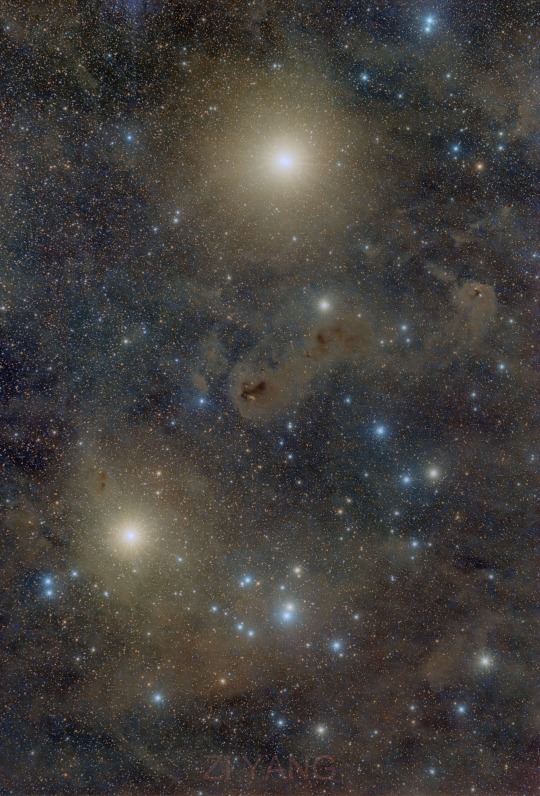
Mars (top) and the Hyades (bottom) // Ziyang Chang
#astronomy#astrophotography#stars#star cluster#open cluster#hyades#star#aldebaran#alpha tauri#solar system#planet#rocky planet#terrestrial planet#mars
40 notes
·
View notes
Text
✨Astro Calendar 2023✨

⁺₊⋆ ☾ ⋆⁺₊ Lunar Events: ⁺₊⋆ ☾ ⋆⁺₊
● Jan 7th Full Moon in Cancer
○ Jan 22nd New Moon in Aquarius - Lunar New Year
● Feb 6th Full Moon in Leo
○ Feb 20th New Moon in Pisces
● March 7th Full Moon in Virgo
○ March 22nd New Moon in Leo
● April 6th Full Moon in Libra
○ April 20th New Moon in Aries
◉ Total Eclipse
● May 6th Full Moon in Scorpio ◉ Total Eclipse
○ May 20th New Moon in Taurus
● June 4th Full Moon in Sagittarius
○ June 18th New Moon in Gemini
● July 3rd Full Moon in Capricorn
○ July 18th New Moon in Cancer
● Aug 2nd Full Moon in Aquarius - Supermoon
○ Aug 16th New Moon in Leo
● Aug 31st Full Moon in Pisces - Blue Moon
○ Sep 15th New Moon in Virgo
● Sep 29th Full Moon in Aries
○ Oct 15th New Moon in Libra ◉ Annular Eclipse
● Oct 29th Full Moon in Taurus ◉ Partial Eclipse
○ Nov 13th New Moon in Scorpio
● Nov 27th Full Moon in Gemini
○ Dec 13th New Moon in Sagittarius
● Dec 27th Full Moon in Cancer

⁺₊⋆ ☀︎ ⋆⁺₊ Wheel of the Year: ⁺₊⋆ ☀︎ ⋆⁺₊
✧˖°.☼.°˖✧Southern Hemisphere✧˖°.☼.°˖✧
Lammas/Lughnasadh Feb 2nd
Mabon/Autumn Equinox March 21st
Samhain May 1st
Yule/Winter Solstice Jun 22nd
Imbolc Aug 1st
Ostara/Spring Equinox Sep 23rd
Beltane Oct 31st
Litha/Summer Solstice Dec 22nd

✧˖°.☼.°˖✧Northern Hemisphere✧˖°.☼.°˖✧
Imbolc Feb 1st
Ostara/Spring Equinox March 30th
Beltane May 1st
Litha/Summer Solstice June 21st
Lammas/Lughnasadh Aug 1st
Mabon/Autumn Equinox Sep 22d
Samhain Oct 31st
Yule/Winter Solstice Dec 21st

˖⁺‧₊˚ ˚₊‧⁺˖Retrogrades & Directs: ˖⁺‧₊˚ ˚₊‧⁺˖
☿ Mercury
RX 29th Dec 2022 --> 19th Jan // 20 Days
RX 21st April --> 15th May // 23 Days
RX 24th Aug --> 16th Sep // 23 Days
RX 13th Dec --> 2nd Jan 2024 // 19 Days
♁ Venus RX 23rd Jul --> 4th Sep // 42 Days
♂️Mars RX 31st Oct 2022 --> 13th Jan // 74 Days
♃ Jupiter RX 5th Sep --> 31st Dec // 117 Days
♄ Saturn RX 18th June --> 4th Nov // 139 Days
♅ Uranus
RX 24th Aug --> 23rd Jan // 151 Days
RX 29th Aug --> 27th Jan 2024 // 151 Days
♆ Neptune RX 1st Jul --> 7th Dec // 158 Days
♇ Pluto RX 2nd May --> 11th Oct // 162 Days

* ⋆·˚ ༘ * 🔭 Astro Events to See: * ⋆·˚ ༘ * 🔭
Quadrantids Meteor Shower 1st-7th Jan; Peaks on the 3rd. Full Moon
Venus Conjunct Saturn Jan 22nd
Venus Conjunct Jupiter March 1st
Eta Aquarids Meteor Shower 19th April -28th May. Strongest in Southern Hemisphere
Lyrids Meteor Shower 16th-25th April, peak on the 22nd/23rd
Venus near Pleiades & Hyades star clusters April 21st/22nd (20 meteors per hour)
Venus-Mars-Moon Triangle May 23rd
Beehive Star Cluster near Mars & Venus June 1st/2nd
Venus-Mars-Moon Triangle June 6th
Moon Venus Mars Visible low in the west on the Solstice of June 21st
Delta Aquarids July 12th - Aug 23rd; peak 28th/29th July
Perseids Meteor Shower begins July 27th and peaks on 12th Aug
Blue Moon Aug 31st
Oct 14th Partial Solar Eclipse, visible to Southern USA; Gulf of Mexico
Leonids Nov 3rd - Dec 2nd; peak Nov 18th
Geminids Meteor Shower Dec 4th - 17th, peak on the 12th (120-160 meteors per hour)

#happy new year!!!#2023#2023 calendar#Astro events 2023#wheel of the year#lunar cycle#calendar#new year#witchblr#paganblr#pagan witch#2023 lunar dates
190 notes
·
View notes
Note
Ayo has NASA ever shown any pics of Mars moons in it's sky? I NEED TO KNOW
a couple asks ago i showed an example of this. here’s a few more:

annular solar eclipse/transit of Phobos across the Sun from Curiosity.

transit of Deimos across the Sun from Curiosity.
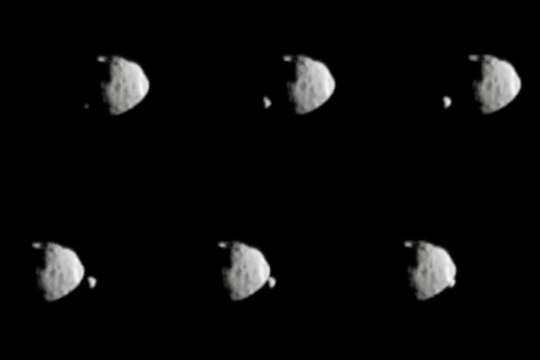
Occultation of Deimos by Phobos as seen by Curiosity.
The telephoto cameras used for navigation on Mars are also capable of being used as weak telescopes. (I do not know how they safely get photos of the Sun, though. Even at Mars distance that would still fry the sensors--so i assume they must have put a solar filter on the instrument specifically for this use case.)
While looking for images I came across this really cool one from Spirit:
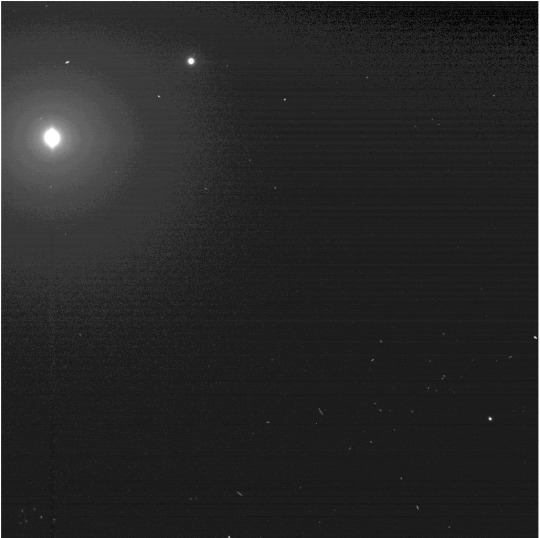
The bright moon-like glow is Phobos. The dimmer dot is Deimos. Towards the bottom of the image is the Hyades cluster, and the bright star Aldeberan. In the lower left is the Pleiades cluster. This is an approximately naked eye-like view (well, maybe 2x or 3x magnification), except that with the naked eye Phobos would not look overexposed.This is really striking to me because this actually feels like a view of the night sky on Earth, yet with alien moons. Really cool.
Here’s a labelled, overexposed version:

I don’t think there’s been any color pictures of this done because Mars rovers are not astronomical observatories and because there’s not much color detail actually visible in the moons. And I assume aside from the solar eclipse pictures these images were all taken at night, with pitch-black skies and nearly black horizons.
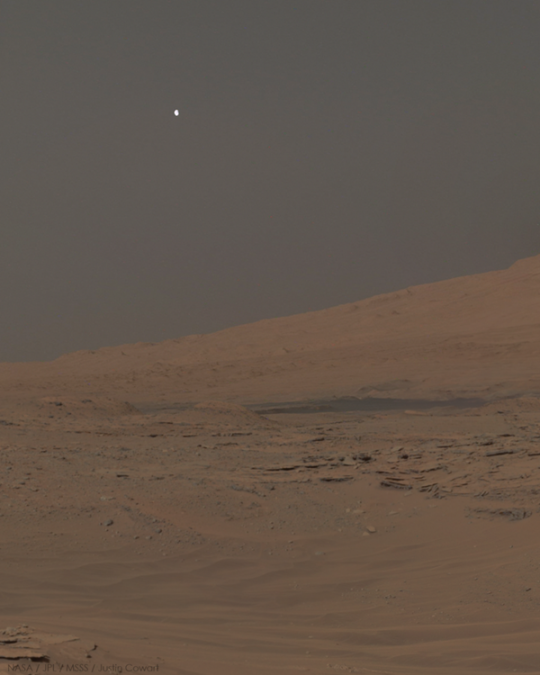
This evening or afternoon image depicting Phobos as seen by Curiosity is a composite image--Phobos is probably much brighter here than it would really look during the day on Mars.

Deimos is visible in this poorly white-balanced shot of Mars from Perseverence. The sky is green here but Mars’ sky is really more of a yellow or brown color.

Here is almost the reverse--seen from an orbiting satellite, here is Phobos against the limb (edge of the visible disk; horizon) of Mars. I believe terrain looks weirdly flattened and a little distorted here due to lensing from Mars’ atmosphere--you can see how the effect gets worse closer to the limb. A similar effect, but more significant, can happen when looking at the limb of the Earth from space. Space probes use multiple color filters to take color photos, but when it comes to fast moving targets it’s not possible to switch colors in time, which is why this image is in grayscale. Notice also how dark Phobos is--it’s almost black. It only appears bright against the even blacker space. This is also true of the Moon, incidentally, but the effect is even more pronounced with Phobos.
9 notes
·
View notes

